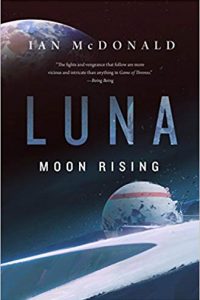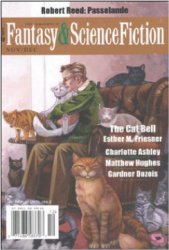Gwenda Bond reviews Ursula Dubosarsky
 Not all of gifted Australian writer Ursula Dubosarsky’s books make it to the US, alas, but the ones that have – The Red Shoe and now The Golden Day, particularly – tend to garner quiet attention and critical acclaim. Speculative elements are understated if present, or even metaphorical, in some of her work. For instance, The Red Shoe is pure (and brilliant) historical fiction set in 1950s Sydney, but begins with a plea for Once Upon a Time and a gruesome version of Hans Christian Andersen’s tale, and includes a prominent imaginary friend named Floreal. These are books that will interest the discerning fantasy reader, even when they lack overt fantastical elements.
Not all of gifted Australian writer Ursula Dubosarsky’s books make it to the US, alas, but the ones that have – The Red Shoe and now The Golden Day, particularly – tend to garner quiet attention and critical acclaim. Speculative elements are understated if present, or even metaphorical, in some of her work. For instance, The Red Shoe is pure (and brilliant) historical fiction set in 1950s Sydney, but begins with a plea for Once Upon a Time and a gruesome version of Hans Christian Andersen’s tale, and includes a prominent imaginary friend named Floreal. These are books that will interest the discerning fantasy reader, even when they lack overt fantastical elements.
Which brings us to the brief but powerful The Golden Day, which is built around an understated, creeping sense of dread worthy of any horror novel. Eleven little girls in a class at a girls’ school in 1960s Australia are taken on a short day trip by their beloved free spirit of a teacher, Miss Renshaw. At the gardens, where their assignment is to ‘‘think about death,’’ they also meet up with an adult male poet, Morgan, who Miss Renshaw knows and who we are told is fleeing the draft. He somewhat charms the girls, and certainly Miss Renshaw, but the reader is uneasy about him from his appearance on the page. We don’t trust him, and when he shows the girls and their teacher into a cave to see Aboriginal paintings, our instincts tell us they should run. And when they do get inside, the adults are then separated from the girls, and the children must go back on their own. When neither Morgan nor their teacher emerges, we know we were right to be uneasy. The girls debate and discuss, but ultimately go back to school. They are sure Miss Renshaw will appear at any moment. Or most of them are. Little Cubby sees ghost words: ‘‘Not now, Not ever.’’ This is a refrain she thinks of as the weeks unfold, and Miss Renshaw still does not return. A front page story confirms the worst about Morgan.
The Golden Day limns this one event, a crack in the window these privileged, engaging little girls have previously viewed the world through. Each one experiences the loss, the oddity of what happened (and that they will likely never know precisely), differently, and its impact on the class as a whole is captured as well. And always that echo of ‘‘Not now, Not ever’’ floating through Cubby’s head, building to an ending that does venture into the fantastic and which gives a grim answer to the text’s central question – but with a sense of deftness and light to it that only underscores Dubosarsky’s skill. Magical realism is fairly rare in children’s and YA fiction; most works fall firmly into either a realist camp or a fantastic/speculative one. But Dubosarsky is one of those rare writers whose work feels both true and invented, always, the uncanny seamlessly interwoven with the fabric of life.
It’s impossible reading this book not to think of the quote from Jean Rhys’s Good Morning, Midnight: ‘‘But they never last, the golden days. And it can be sad, the sun in the afternoon, can’t it? Yes, it can be sad, the afternoon sun, sad and frightening.’’ The Golden Day is a highly recommended portrait of life interrupted, in all its sad and frightening – but beautiful – reality.






